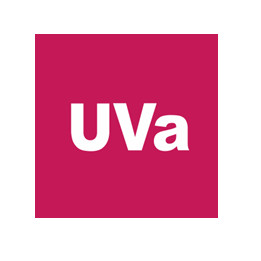Mostrar el registro sencillo del ítem
| dc.contributor.advisor | Peña Miranda, María del Mar Agripina | es |
| dc.contributor.advisor | Manenti, Flavio | es |
| dc.contributor.advisor | Previtali, Daniele | es |
| dc.contributor.author | Gimeno Sanz, Alberto Nicolás | |
| dc.contributor.editor | Universidad de Valladolid. Escuela de Ingenierías Industriales | es |
| dc.date.accessioned | 2017-09-05T09:35:34Z | |
| dc.date.available | 2017-09-05T09:35:34Z | |
| dc.date.issued | 2017 | |
| dc.identifier.uri | http://uvadoc.uva.es/handle/10324/25384 | |
| dc.description.abstract | Oxygen, along with oxygen enriched air, is used in multiple applications, namely chemical industry and healthcare industry. Currently there are three main ways to get oxygen: cryogenic distillation, water electrolysis and membrane separation, being the first the most widely used on industrial scale. It allows the production of highly concentrated oxygen but it has one main downside, which is the high energy spending. The other processes present a lower costefficiency. A new process to produce enriched air was analysed. It is based on the ability of water to absorb and desorb oxygen at different thermodynamic equilibria, varying temperature and pressure. Firstly, based on empirical tests carried out in laboratory it was attempted to create a mathematical model. The first attempt was modelled with neural networks, but the small available empirical set of information did not allow to get a trustworthy model. The second attempt, adjusted by square errors minimising, outperforms the simulations done with computational software based on theoretical equations. Secondly, the process was simulated by computer solving the Rachford-Rice equation with an Excel worksheet and with the computer software SimSci PRO/II. Thirdly, the process model was applied to three different scenarios: chemical industry, ship propulsion and healthcare industry. In the chemical and the oil industry oxidation processes are common practice, ships use large quantities of air to oxidise the fuel in the combustion process that propels them and oxygen is important in healthcare in almost every lung related issue. Regarding the two first scenarios, the outcomes resulted in flows of water so massive that rendered the whole process unfeasible. The application to healthcare was focused on contexts where there is no possibility to obtain bottled oxygen or electricity supply is unreliable, i.e. sub- Saharan Africa. The process was designed to the Sounon-Sero hospital in Nikki (Benin), as a proxy for any hospital in a similar context. In fact, based on the information provided by that hospital, after traumatisms and malaria, it is lung-related infections that account for the highest number of patients attended at Sounon- Sero. A special emphasis has been put in designing a simple and reliable system with a demand sizing based on supply side, given the maximum capabilities of the equipment that can be found in Nikki. This opens new research opportunities regarding a more precise demand sizing or budget, which is to be done within an on-field venture. | es |
| dc.description.sponsorship | Departamento de Ingeniería Química y Tecnología del Medio Ambiente | es |
| dc.format.mimetype | application/pdf | es |
| dc.language.iso | eng | es |
| dc.rights.accessRights | info:eu-repo/semantics/openAccess | es |
| dc.rights.uri | http://creativecommons.org/licenses/by-nc-nd/4.0/ | |
| dc.subject | Ingeniería química | es |
| dc.subject | Oxígeno - Indústria | es |
| dc.title | Modelado, optimización y análisis tecno-económico de un proceso para producir aire enriquecido en oxígeno por desorción de agua. Aplicación y diseño para un hospital en África subsahariana | es |
| dc.title.alternative | Modelling, optimisation and techno-economic analysis of a process to produce oxygen-enriched air by water desorption. Application and design for a hospital in sub-Saharan Africa | es |
| dc.type | info:eu-repo/semantics/bachelorThesis | es |
| dc.description.degree | Grado en Ingeniería Química | es |
| dc.rights | Attribution-NonCommercial-NoDerivatives 4.0 International |
Ficheros en el ítem
Este ítem aparece en la(s) siguiente(s) colección(ones)
- Trabajos Fin de Grado UVa [33115]
 La licencia del ítem se describe como Attribution-NonCommercial-NoDerivatives 4.0 International
La licencia del ítem se describe como Attribution-NonCommercial-NoDerivatives 4.0 International




